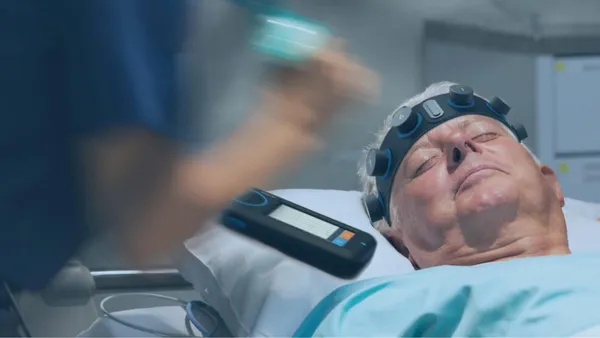Dive Brief:
-
Teleflex has dialed up its full-year sales outlook again after beating analyst expectations in the third quarter.
-
In results posted Thursday, Teleflex reported a 50% increase in interventional urology sales as demand for its minimally invasive treatment for enlarged prostate continued to rise.
-
The expectation of further urology growth enabled Teleflex to brush off an anticipated $8.7 million headwind tied to a dispute over the use of ethylene oxide to sterilize medical devices.
Dive Insight:
Teleflex is one of the medical device companies that tasks a third party contractor with sterilizing its products. In September, Sterigenics temporarily closed its Atlanta facility to make changes to reduce emissions of ethylene oxide, a chemical used in the sterilization of around 50% of medical devices. The push to cut emissions follows concerns about the impact of the carcinogenic chemical on local populations.
Sterigenics aimed to complete construction in the first week of October but the impact of the closure on Teleflex will drag on to at least the fourth quarter. Teleflex expects the closure to wipe out $8.7 million in anticipated sales across its surgical, catheter and OEM businesses.
Beyond 2019, the situation is less clear. Teleflex CEO Liam Kelly told analysts the sterilization provider has yet to get a "clear line of sight as to when that facility may be reactivated." Teleflex expects efforts to access sterilization capacity at other sites will insulate it from the problems in Atlanta in the longer term but analysts are alert to the risk of an ongoing headwind.
"We are not factoring anything specifically to 2020 and this is something we will need to monitor as these things can drag on, especially when local governments are involved," analysts at William Blair wrote in a note to investors.
Despite the anticipated fourth quarter headwind, Teleflex raised its full-year sales outlook slightly. The revised outlook reflects better-than-expected third quarter performance and the expectation of more growth to come over the rest of 2019. Teleflex’s key growth driver, the prostate device UroLift, is unaffected by the sterilization problems, according to Kelly.
Teleflex now expects sales of UroLift to grow 40% in 2019, up from its original guidance of 30%. The raised outlook follows nine months in which sales of UroLift grew 45%. In the third quarter, UroLift drove the overall Teleflex business to growth of 8%, well above the analyst consensus of 5.5%.
The performance of UroLift across 2019 shows how acquisitions can drive growth. Teleflex acquired the device in its 2017 acquisition of NeoTract, which was worth $725 million upfront. With that bet paying off, Teleflex is now on the hunt for another acquisition target.
"I'm spending more of my time on M&A in the last number of months than I have in any time since I took over as CEO," Kelly said. "We're looking in men's health, we're looking in the vascular area, we're looking in the surgical area, we're looking in the OEM area. We're looking in the anesthesia and emergency medicine area, and of course we never stop looking in the interventional, cardiology and radiology area."









